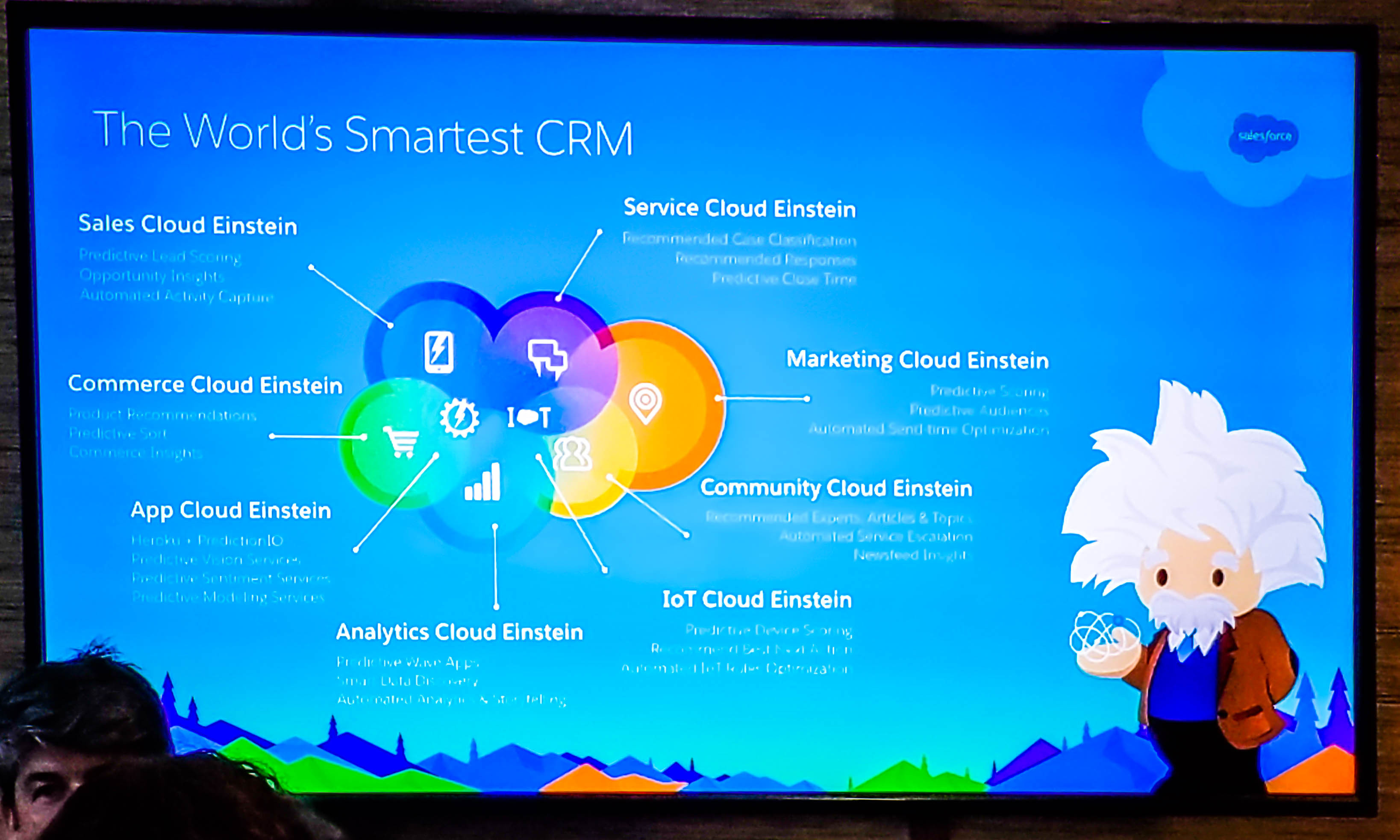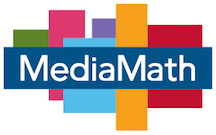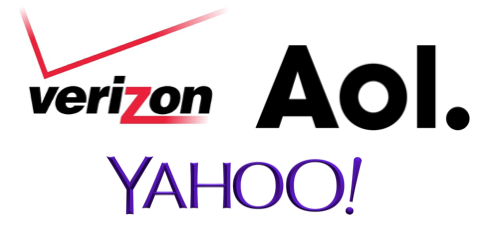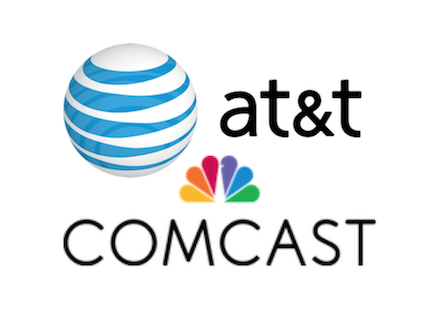
Publishings
Program Areas
-
Blog
CDD Welcomes FCC Chairman Wheeler’s Broadband Privacy Proposal
Provides Key New Safeguards for ISP Customers’ Privacy
Washington, DC: Federal Communications Commission Chairman Tom Wheeler announced today (link is external) that he is circulating a broadband ISP privacy proposal to the other four FCC Commissioners detailing a plan that would provide individuals with key safeguards regarding their data. The proposal is designed to help implement the FCC “Open Internet” order to ensure that ISPs respect the privacy of communications over broadband and mobile networks. The following can be attributed to Katharina Kopp, Deputy Director, Center for Digital Democracy: We laud the timely development of a rule that would require ISP customer permission before much of their personal information may be used or shared. This proposal offers consumers the much needed safeguards and desired control over their own personal information. For the first time, ISPs would have to obtain customer consent for the use of web browsing and app usage history for advertising purposes. Given the unique position of ISPs as gatekeepers to vast amounts of customer data, the FCC’s proposed broadband privacy rule is a critical step in preserving a free and open Internet into the 21st century. Because we know that ISPs’ big data analytical capabilities can turn seemingly non-sensitive information into highly private information about our lives, and because all our browsing data and the content of our communications is incredibly sensitive to begin with, we had asked the FCC to avoid drawing distinctions between “sensitive” and “non-sensitive” categories of information. Still, we believe that the proposal’s framework can work for consumer privacy provided the FCC’s definition of “sensitive” is robust and meaningful. We will work to ensure this proposal is effectively implemented and that ISP broadband consumers receive the privacy protections they deserve. The Center for Digital Democracy is a leading nonprofit organization focused on empowering and protecting the rights of the public in the digital era. -
Blog
Introducing Salesforce Einstein–AI for Everyone
Artificial Intelligence Uses Big Data for 1:1 consumer targeting/Privacy & Consumer Protection?
Apple’s Siri analyzes thousands of movie showings and surfaces recommendations for the best times and theaters based on my location within seconds. Spotify knows my music preferences and curates personalized playlists for me. Facebook instantly recognizes my friends in photos and suggests tags with nearly 98 percent accuracy (link is external). All of this is made possible by artificial intelligence (AI)–complex and highly technical solutions such as natural language processing, deep learning and machine learning that when applied to everyday actions in our personal lives make us smarter and more productive. Today, Salesforce is delivering Salesforce Einstein–artificial intelligence for everyone. For many companies, the technical expertise, infrastructure and other resources required to deliver AI solutions is too significant to leverage in their enterprise applications. But in keeping with Albert Einstein's dictum that the definition of genius is taking the complex and making it simple, Salesforce Einstein is removing the complexity of AI, enabling any company to deliver smarter, personalized and more predictive customer experiences. Salesforce Einstein is a set of best-in-class platform services that bring advanced AI capabilities into the core of the Customer Success Platform, making Salesforce the world’s smartest CRM. Powered by advanced machine learning, deep learning, predictive analytics, natural language processing and smart data discovery, Einstein’s models will be automatically customized for every single customer, and it will learn, self-tune, and get smarter with every interaction and additional piece of data. Most importantly, Einstein’s intelligence will be embedded within the context of business, automatically discovering relevant insights, predicting future behavior, proactively recommending best next actions and even automating tasks. With Einstein, the world’s #1 CRM is now the world’s smartest CRM and we’re bringing intelligence to all of our clouds. But don’t take my word for it. See below to hear from our Cloud GMs about what Einstein (link is external)means for all our clouds. Sales Cloud Einstein (link is external) Service Cloud Einstein (link is external) Marketing and Analytics Cloud Einstein (link is external) Community Cloud Einstein (link is external) IoT Cloud Einstein (link is external) App Cloud Einstein (link is external) We couldn’t be more excited to finally unveil Salesforce Einstein after two years of hard work and targeted acquisitions. As we continue to build out AI for CRM, we are committed to understanding the next generation of AI technology and how it can best be applied to Salesforce. This effort will be led by Salesforce Research, a new research group focused on the future of AI, under the leadership of Dr. Richard Socher, our Chief Scientist. -
Fourteen organizations urge FTC Chairwoman Ramirez to put a stop to WhatsApp’s plan to transfer user data to Facebook. This letter coincides with recent complaint filed, concerning the violation of commitments WhatsApp previously made to its subscribers. --- September 22, 2016 Dear Chairwoman Ramirez and FTC Commissioners: The undersigned consumer privacy organizations write in support of the complaint the Electronic Privacy Information Center (“EPIC”) and the Center for Digital Democracy (“CDD”) recently filed concerning WhatsApp’s plan to transfer user data to Facebook in violation of commitments the company previously made to subscribers. We are deeply concerned about the impact this proposed change in data practices will have on the privacy and security of WhatsApp users in the U.S. and across the world. We urge the FTC to investigate this matter and to fulfill its obligation to prevent WhatsApp and Facebook from engaging in unfair and deceptive trade practices. WhatsApp has over one billion users worldwide, and its popularity has been due in large part to its strong public commitment to privacy. The company has long made its pro-privacy commitment a key part of its brand, underscored by numerous public statements and official blog posts on the importance of confidential communications. When Facebook acquired WhatsApp in 2014, both companies made numerous promises to the public and to the FTC that WhatsApp’s data privacy practices would not change. Consumer privacy organizations raised concerns about the acquisition, and the Commission responded with a clear warning that the companies must continue to honor their privacy promises to WhatsApp users or risk violating Section 5 of the FTC Act. The Commission stated the companies must obtain “affirmative consent” from WhatsApp users before materially changing its practices for information it collected before the merger. The FTC stated at the time that “WhatsApp must continue to honor these promises to consumers. Further, if the acquisition is completed and WhatsApp fails to honor these promises, both companies could be in violation of Section 5 of the Federal Trade Commission (FTC) Act and, potentially, the FTC’s order against Facebook.” The FTC has previously interpreted affirmative consent to require opt-in consent, particularly in the context of material retroactive changes to privacy promises. On August 25, 2016, WhatsApp announced plans to use and transfer customer data, including users’ verified telephone numbers, to Facebook for user profiling and targeted advertising. WhatsApp previously collected phone numbers and other personal information from over one billion users with the promise that this information would not be used or disclosed for marketing purposes. WhatsApp’s reversal on this promise is a material, retroactive change that will apply to previously collected data. Contrary to FTC policy, WhatsApp does not intend to provide clear notice or obtain customers’ affirmative express consent – i.e., opt-in consent – before implementing these changes for previously collected information. Rather, these material, retroactive changes are buried in WhatsApp’s lengthy revised privacy policy and consumers have 30 days to opt-out. European authorities have already begun investigating WhatsApp’s reversal on the privacy promises it made when seeking regulatory approval of Facebook’s acquisition of the messaging service. European Union Competition Commissioner Margrethe Vestager has indicated the EU is reconsidering its approval of WhatsApp’s 2014 merger with Facebook. Vestager stated that the companies’ promises not to merge user data was “a part of the decision [to approve the merger] so therefore we’re asking some follow-ups to find out what’s going on.” WhatsApp plans to make material, retroactive changes to its numerous privacy promises regarding the use and disclosure of user data without first obtaining users’ affirmative express consent. This is exactly what the FTC said WhatsApp and Facebook cannot do. It is a clear violation of the prohibition on unfair and deceptive trade practices the FTC is obligated to enforce under Section 5 of the FTC Act. We urge the Commission to fulfill its duty to protect consumer privacy, and to investigate and enjoin WhatsApp and Facebook’s proposed change in business practices. We appreciate your attention to this important matter. Sincerely, Bill of Rights Defense Committee & Defending Dissent Foundation Center for Digital Democracy Center for Financial Privacy and Human Rights Common Sense Kids Action Constitutional Alliance Consumer Action Consumer Federation of America Consumer Watchdog Cyber Privacy Project Demand Progress Electronic Privacy Information Center The FoolProof Foundation Patient Privacy Rights Privacy Rights Clearinghouse Privacy Rights Now Coalition Privacy Times U.S. PIRG ---
-
It’s pretty obvious advertising is reaching the next level – AI, VR, AR, and countless other acronyms, showcase advertising capabilities nobody ever thought possible. Enter The Weather Company and Watson Ads. Watson Ads doesn’t just answer a posed question, it learns and adapts answers based on a number of factors, to deliver a personal experience. ExchangeWire speak with Jeremy Steinberg (pictured below), global head of sales, The Weather Company, an IBM Business, about the practical use cases of Watson Ads in the real world. ExchangeWire: The Weather Company announced Watson Ads earlier this year, which sounds like a sci-fi level advertising capability – how does it work? Jeremy Steinberg: Watson Ads create a new engagement paradigm between brands and consumers. It cracks the code of how to reach a massive audience and have a personalised, one-to-one conversation with each consumer. To do this, Watson Ads take the core elements of Watson’s functionality by training on a particular subject matter – in this instance, our beta partners’ body of content – and sparking conversation with The Weather Channel app and weather.com visitors. When Watson asks a user to “name any dish, ingredient, or occasion”, it is prompting a natural language engagement, reasons through possible responses, and offers thoughtful, personalised suggestions that drive deeper brand engagement. Whether they’re used for food, consumer health, auto, retail brands – and beyond – Watson Ads will help marketers make the most of their moments with consumers, uncover consumer and product insights faster than ever before, and illuminate previously dark data. For consumers, it will be an intuitive experience that provides powerful utility within a trusted environment. What sort of potential use cases could there be for a marketer? Watson’s capacity to learn, develop expertise, and interact naturally make the use cases as broad as a marketer can imagine. In the CPG food category, Watson Ads can generate brand new recipes using core ingredients, and feed emerging food trends back to marketers. In the consumer health space, Watson Ads may help individuals make better choices for their common cold and flu treatments, help prevent and manage pain, and cope with allergy season – all occasions where weather plays a major role. Looking at current Watson clients, like Macy’s and The North Face, the retail application could act like a personal shopper that makes smarter and more tailored recommendations. In the auto category, in particular, the use case could span vehicle selection and customisation to learning about staying safe on the road in difficult conditions. The way we think about it when approaching our marketing partners is: “What consumer challenge has been difficult to solve, even with research and focus groups?” Since each Watson Ad instance will be a personal dialogue, Watson Ads outputs and insights can act like focus groups, getting to the core of user-brand interactions, informing product strategies, and even expanding into creative strategies. Take, for example, a consumer asking by voice interaction: “What can I make for dinner tonight?” Based on its machine learning and reasoning ability from the data is has ingested, Watson can sort through ingredient and flavor profiles to make smart recommendations based on the user’s input, like what kind of ingredients they have on hand, preferred cuisines, and the occasion hand – all surfaced via dynamics ads. Furthermore, Watson’s ability to process and create context from large amounts of unstructured data will help marketers provide consumers with meaningful, true brand and product engagement. In this example, creating recipes on the fly with ingredients consumers already have and like to use from trusted brands. But you can extend this machine learning capability to almost any category. Watson can learn about any product – whether it’s dosage information for an over-the-counter medicine, creature comforts of a new automobile on the market, the flavours available for a certain ice cream treat, and beyond. --- Full interview available at http://bit.ly/2cct57C (link is external)
-
Blog
MediaMath Launches Unique Hyperlocal Offering in Partnership with Factual
New product gives marketers best-in-class tool to target their mobile programmatic campaigns based on the user’s real-time location
Global technology company, MediaMath, today announced its unique hyperlocal targeting capabilities to enable marketers to deliver high-performing mobile advertising to users based on their real-time location. Location data combined with unmatched global scale yields a powerful tool that empowers marketers to drive better performance. This solution is in partnership with Factual, a global leader in location data, and leverages their Geopulse Proximity data service, which is uniquely integrated into MediaMath’s TerminalOne Marketing Operating System™. MediaMath is the first partner to fully embed Factual’s Geopulse Proximity Designer within its platform. The union enables clients to design, build, and activate hyperlocal-targeting strategies directly within TerminalOne, yielding a seamless, end-to-end workflow. Activating these sophisticated and flexible geofences against MediaMath’s unmatched global supply scale gives advertisers another method by which to drive and maximise long-term business outcomes. Rahul Vasudev, Managing Director, Asia Pacific at MediaMath, commented, “MediaMath has always worked towards the vision of becoming a Marketing OS for our clients. This means enabling our clients to seamlessly run their display, video, mobile and social media buys through our platform. Today, mobile is the fastest growing channel for us in APAC, and so we have been releasing a slew of new mobile-specific tools, that enable our clients to invest ever increasing budgets on this channel. We are excited to include hyperlocal targeting to our list of mobile targeting and optimization offerings. An acknowledged leader in this space, Factual has an immense capability for highly accurate geo-fencing of audiences, including in APAC.” The new offering leverages Geopulse Proximity’s flexible and accurate global targeting capabilities, powered by best-in-class Global Places™ data. Factual’s Global Places data covers over 95 million business listings and points of interest across 50 countries, including APAC regions such as Australia, China, Malaysia, New Zealand and Singapore, and is continually updated to help ensure freshness and accuracy. This same data is used by thousands of developers and companies including some of the largest search, mapping, navigation, ride sharing, and social network platforms. --- For full article, visit http://bit.ly/2cnt1DU (link is external) -
Blog
AOL & Microsoft Expand Global Enterprise-Level Partnership
AOL to Manage and Sell Microsoft's Display Advertising Inventory across MSN, Outlook.com, Xbox, Skype and Ads in Apps in Nine Countries Expanded Partnership Includes New 10-Year Search Agreement
AOL Inc. and Microsoft (NYSE: MSFT) today announced a global, enterprise-level partnership where AOL will assume management and sales responsibility for all of Microsoft's display, mobile and video advertising inventory in nine key global markets -- the United States, the United Kingdom, Canada, Brazil, France, Germany, Italy, Spain, and Japan. AOL will represent inventory from across Microsoft's suite of leading online brands, including MSN Homepage and verticals, Outlook Mail, Xbox, Skype and ads in apps. AOL's success has been driven by its strength and leadership in unleashing both sides of the marketing "barbell" – premium consumer experiences driven by sophisticated programmatic platforms. The April launch of ONE by AOL, the first cross-screen programmatic advertising platform with integrated multi-touch attribution optimizing campaigns from Web to TV, positioned the company to take on additional demand and inventory pools with the goal of driving superior outcomes for publishers and advertisers. The expanded partnership with Microsoft builds on that momentum and meaningfully expands AOL's global footprint, while simplifying the ecosystem for advertisers. The arrangement will improve ad campaign efficiency and effectiveness through the delivery of scaled premium inventory across display, video and mobile, and enables marketers to deeply target premium audiences globally in key verticals, including autos, entertainment, health & fitness, lifestyle, money, news, sports, travel, and weather. The partnership includes a new 10-year global search and search advertising agreement between AOL and Microsoft that leverages Microsoft's exceptional search capabilities to deliver innovative search solutions for consumers, advertisers and partners. Both companies will enable AOL users to access a world-class search experience across all screens. AOL will transition to a Bing-powered search solution beginning January 1, 2016. --- Full article available at http://aol.it/2bWdOq1 (link is external) -
Blog
Stanford Economist Professor Helps Big Data Targeting Company
Appointment signifies AppNexus' emergence as the leading independent marketplace for digital advertising
AppNexus, the world's leading independent ad tech company, today announced the appointment of Gabriel Weintraub as Chief Economist. Currently a professor at the Stanford Graduate School of Business, Weintraub specializes in the economics and optimization of marketplaces, particularly, auction markets. He enjoys a broad mandate to drive new efficiencies in AppNexus' pricing structures and to formulate marketplace practices that strengthen the mutuality of interest between buyers and sellers on the company's unified platform. He will report directly to Catherine Williams, AppNexus' Chief Data Scientist. "Gabriel's appointment represents a milestone in our development as a technology platform," said Brian O'Kelley, CEO of AppNexus. "All digital marketplaces – whether they sell hotel rooms and flights, securities, custom artwork, or advertising – need to think critically about how to improve auction design and pricing structure, and how to strengthen the mutuality of interest between buyers and sellers. Gabriel combines unparalleled academic expertise with a practitioner's eye for execution." Weintraub earned his bachelor's degree in industrial engineering from the University of Chile and an M.A. in economics and Ph.D. in management science and engineering from Stanford University. In addition to his role at AppNexus, he holds a tenured appointment at Stanford Graduate School of Business, where he teaches graduate courses in business analytics, game theory, and online markets. "Just a few years ago, it seemed novel that technology companies were hiring professionals from outside the computer science field," Williams added. "In ad tech, that often meant hiring mathematicians, social scientists or financial services professionals. Today, the most sophisticated digital platforms are powering complex marketplace transactions, and they require deep insight into the economics of pricing and auction design. In this respect, Gabriel's appointment gives AppNexus an edge over its peers." --- Full article available at http://prn.to/2crgjWy (link is external) -
Verizon today announced it has entered into an agreement to purchase an approximate 24.5% stake in AwesomenessTV (the "Company"). Upon completion of this transaction, the AwesomenessTV multi-platform media company will be valued at approximately $650 million. DreamWorks Animation (Nasdaq: DWA (link is external)), which acquired AwesomenessTV in 2013, will remain the Company's majority stakeholder with an approximate 51% ownership of outstanding shares, while Hearst will own the remaining 24.5%. Brian Robbins, AwesomenessTV founder and CEO, and Brett Bouttier, AwesomenessTV's president, will continue to lead the Company. In addition to its equity investment, Verizon will enter into an agreement with AwesomenessTV to create a first-of-its-kind premium short-form mobile video service featuring leading talent in front of and behind the camera. The new service will operate as a new and independent brand, and feature premium transactional content for a variety of audiences on par with the highest-end content seen on television today. The new service will launch as part of the go90 offering and Verizon will fund the initiative through a multi-year agreement with AwesomenessTV. "In addition to delivering compelling scripted and non-scripted series with high production values, AwesomenessTV has demonstrated an ability to zero in on programming that Gen Z and millennials want to watch," said Marni Walden, executive vice president and president of Product & New Business Innovation, Verizon. "The content AwesomenessTV has produced for go90 has exceeded all our expectations with shows such as Guidance and Top Five Live. That's why we want to be in the AwesomenessTV business." The new premium content service will initially be exclusive to Verizon platforms in the United States, while AwesomenessTV will retain the right to sell content in the rest of the world. In addition to the production resources, expertise and marketing know-how of the team at AwesomenessTV, the partners will draw upon the entire Hollywood community – studios, production companies, writers, directors and actors – for content creation. "This deal gives us the resources to work with the biggest talent in front of and behind the camera to create this new branded service and produce the most premium short-form content ever, made specifically for the device racking up the fastest growing viewership – the mobile phone," said AwesomenessTV's Brian Robbins. "With Verizon joining DreamWorks Animation and Hearst as part of our equity ownership group, we benefit from the strategic insight and resources of the entertainment and communications industries' most visionary companies and leaders. Our goal is to be the media company of the future, where content and distribution go hand in hand – we are now one giant step closer to that future." --- For full article, visit http://prn.to/1STY7wL (link is external)
-
Blog
Big Data is Watching: Growing Digital Data Surveillance of Consumers by ISPs and Other Leading Video Providers
Americans face growing new threats to their personal privacy as phone and cable Internet service providers (ISPs), along with leading Internet companies, expand their ability to capture details about what we do online in order to target us with data-driven personalized advertising. This report examines AT&T, Comcast, Cablevision, Charter, Cox, Verizon, Dish, Time Warner Cable, Viacom, Google, News Corp. (Fox), Turner Broadcasting (Time Warner), and Disney, focusing on some of their recent data- and video-related advertising practices. ISPs have formed partnerships with powerful data brokers (including Acxiom, Krux, and Oracle Marketing Cloud), gaining new insights into our online and offline behaviors. They are incorporating state-of-the-art “Big Data” practices, such as “programmatic advertising” that instantaneously buys and sells individual consumers—to financial marketers, fast-food companies, and health advertisers, for example—all without the consumer’s knowledge. In the process, ISPs have transformed TV and digital video into a vast new source of personal information, analyzing set-top box and streaming-video data for our viewing habits, and combining that information with sensitive online and offline data (including financial, health, racial, ethnic, and location) to compile detailed “digital dossiers” on millions of Americans. The ability of an ISP and others to identify and target us regardless of what digital device we use, moreover, has effectively erased any privacy safeguards we may have enjoyed in the past when we switched between devices. The report provides more evidence of the “digital data arms race” that is further eroding consumer privacy: AT&T, through its AdWorks division, has developed a “cross-screen system to match users’ mobile, online and television devices together based on identifiers and systems” that the company has “access to.” It operates a “consumer insights platform” that uses “Big-Data” techniques to advance AT&T’s targeted-marketing objectives. Comcast is using Rubicon’s Advertising Automation Cloud, “one of the largest cloud and Big Data computing systems in the world, [which] leverages over 50,000 algorithms and analyzes billions of data points in real time” to buy and sell individuals to marketers. Verizon, by acquiring mobile-marketing-data company Millennial Media, gained access to customer data gathered by more than 60,000 apps, including “location, social, interest, and contextual” information. Millennial has “developed more than 700 million active server-side unique user profiles, over 60 million of which link multiple mobile devices and PCs to a single specific user ... ,” with some 175 million monthly unique users in the “United States alone.” The Federal Communications Commission’s pending proceeding on privacy should examine all the ways that broadband networks operated by Internet service providers gather and use consumer information today. The review and policy proposals need to address the data-targeting relationships that ISPs have with leading digital marketing companies, including ad exchanges, data brokers, and advertisers. The FCC should enact privacy and consumer protection rules that provide individuals with rights over their data—including a set of Fair Information Practices that address the current data practices of ISPs. These companies should not be allowed to share data with affiliates or to use information for marketing their services without the informed, prior consent of the customer. Policies for privacy are essential as well for a competitive digital video market. Otherwise powerful ISPs and other gatekeepers will control the key way programming is financially supported and distributed. --- Full report attached. -
Yahoo has unprecedented resolution into cross-device information, by combining our view of logged in users from multiple devices with app data inferred from Flurry analytics, search and geolocation data from logged-in mobile devices, and third-party data. Verified devices give us high accuracy, while inferred devices gives us scale. And when we use the verified model to train the inferred model, we are able to create a broad device model that improves overall accuracy, which we call the Yahoo Device Graph. This is built on profiles of over one billion user accounts across Yahoo properties, the hundreds of thousands of registered apps on the Flurry network, and third-party data sources. Through the device graph, Yahoo has more than 650 million users mapped to more than one device (as of Q1 2016), and is in the unique position to break a hole in the garden wall, and build a gate to the outside world. Cross-device technology provides the ability to target a customer with reliable accuracy across all their devices, shares insights into your customer’s true conversion path, and allows you to manage ad exposure to keep impact high while minimizing waste. We covered the topic well in our recent e-book, Finding Success in a Cross-Device World (link is external). Many of our clients are already putting this targeting into practice. Here are some pointers from the clients who are doing it right: Expand Your Audience Criteria Start by minimizing the constraints you place on your target audience criteria. That way, you can maximize the unique insights you’ll find out of each channel. Every device and media channel has an innate set of users who will react differently to your product and message, and opening your targeting parameters will provide better data on those differences among users. Cross-device targeting will give you the insight to tease out those differences, so long as your initial audience isn’t too limited. As far as you can allow, let your data tell you how an android user reacts compared to an iPhone user, or a desktop video user versus a mobile video user. Plan to Shift Budgets Plan your budget around a goal and an intended audience, and don’t let your budget get siloed. In a traditional online buy, a client or agency divides their buying teams and spends by channel. In the world of platform buying with cross-device targeting, this kind of division can limit your performance and insights. It’s a chicken and egg problem – we never budgeted by audiences across devices because we couldn’t find the same person on different devices. Now that we can, the way we separate out budgets needs to focus back on the intended user and not on the channel. Cross-device targeting gives you the unique ability to look at your person as a whole person through all their devices. To capture the full benefits of your plan, your teams and budgets have to be fluid enough to follow your customers wherever they will be. Leverage Different Creatives Cross-device targeting will finally give you a level playing field for evaluating your creative equally across devices, for better or worse. On one hand, you finally have a method to ensure you are talking to the same person on all their devices, on the other hand, banner blindness and ad burnout is going to happen much quicker if you duplicate your creative (TV ads as online ads, display ads shrunk down to be mobile ads). Different devices offer unique opportunities to custom-tailor experiences. Consider the unique creative opportunities that come from multiple channels, and plan your campaign accordingly. User Experience Comes First Make sure your users love every moment of their experience on your sites and with your creatives. Positive user experiences often have a stronger impact than the best cross-device targeting in the world, so make sure you’re working with both. Is your mobile site and app experience engaging, simple, and intuitive? Or is it difficult for a customer to move through your buying funnel? A great targeting and creative plan can fall flat on a bad site or app experience. Like the creative issues described above, a well-designed user experience will also show up in your analytics as people flow through the process and convert to loyal customers. Be Adaptable Expect to be surprised by the cross-device conversion data, and be ready to adapt. You’ve already done a great job improving your creative, site, and targeting and you have released your campaign into the wild. The data might push you to make changes, along with a wide variety of factors. A brokerage advertiser may be at the mercy of the stock market, and have to speed up new customer spending during volatile times. Auto shoppers may always be better targeted on their mobile devices while they are on a competitor’s lot than in front of their computers. Cross-device targeting can give you the comfort that you are making decisions based on analytics, looking at the most complete picture of your customers. --- For more information, visit http://bit.ly/2aJfWWp (link is external)
-
Blog
DataLab USA Data Sourcing & Addressable TV
Better data equals better results Household level targeted TV advertising
Data Sourcing: DataLab’s two data affiliate companies are authorized resellers of both credit and demographic data from the nation’s leading data suppliers. The credit data maintained at DataLab include full agent copies from all 3 bureaus, each with thousands of attributes, weekly transactional files tracking credit changes across hundreds of attributes, daily inquiry triggers, and a multitude of property and auto x-date fields. Furthermore, DataLab installs, processes, and maintains national files from over a dozen leading national and specialty demographic data providers. DataLab processes approximately 2.5 trillion name-attribute combinations every month, or more than 11,000 attributes for more than 220 million U.S. consumers across its more than 20 files. All of these assets are installed onsite at DataLab, are accessible in a production environment, and are available uniquely to DataLab’s clients. DATA SOURCING DATA PROCESSING ANALYTICS DATA WAREHOUSING Addressable TV: What is it? Addressable TV is displaying TV ads using household-level analytical profiling and segmentation. How does is it work? Addressable subscribers have a set top box with a unique identifier. The box utilizes software that allows the network provider to serve custom ads to that household. DataLab scores prospects using your CRM data and matches it to the subscriber files. This is how target households are selected. The ads are exposed to the target households. After the campaign is complete, results can be measured by matching exposed households with response data and control groups. See how powerful addressable TV can be by checking our addressable TV case study (link is external). How do I get started? DataLab offers addressable TV data prep and analytics services which help your brand target the best prospects available. DataLab will provide a direct introduction to the satellite and cable providers so you can traffic your ads. Through our partnerships with Comcast, Dish, DirecTV and Cablevision you can get your ads to over 55 million households. Will it work for me? Contact us today for a free match of your CRM or prospect records to our addressable TV universe. HIGHLY TARGETABLE Targets customers on a household level HIGHLY MEASURABLE Contrasts treated vs control groups CUSTOMIZED MESSAGES Displays relevant ads TRANSPARENCY AND CONTROL Wastes less media dollars ---- For more information visit http://datalabusa.com/data-sourcing/ (link is external) and http://datalabusa.com/portfolio/addressable-tv/ (link is external) -
The BrightRoll DSP puts the power of programmatic in your hands, giving you access to inventory across all major ad exchanges, SSPs, and publishers. Exclusive Yahoo DataGain exceptional audience insights with exclusive access to Yahoo Audience Data Cross-Channel TargetingReach viewers across devices through video, display, and native ads Full TransparencyKnow and control exactly where your creative appears, down to individual URLs Advanced Audience Targeting Get exclusive access to Yahoo data sources like mobile analytics, email, user registration, search, Yahoo apps, and content consumption. Yahoo’s platforms draw over 1 billionusers every month; users who perform over 165 billion activities every day from 2.7 billion devices. With our Audience Builder and that kind of data in your toolkit, you can use deep—and sometimes surprising—insights to build your audiences easily. Streamlined Campaign Management Precise targeting is key when running programmatic campaigns, and we empower you to target audiences by location, device type, time of day, and dozens of other parameters. But what’s targeting without measurement? Measure the results of your campaigns with third-party integrations with comScore, Nielsen, and Moat, and ensure that your creatives are seen by real viewers with Integral Ad Science and DoubleVerify. Our reporting dashboard gives you results in real time, with full transparency into every campaign parameter, and our technology will automatically optimize campaigns for peak performance. --- For more information visit https://brightroll.com/dsp (link is external)
-
Blog
DoJ and FCC Regulators Must Scrutinize Verizon/Yahoo deal
Need 21st Century Safeguards for Big-Data-driven digital media mergers
Statement of Jeff Chester, CDD executive director: Regulators, including the DOJ and FCC, must prevent Verizon from taking anticompetitive and unfair advantage of its broadband ISP bird’s nest view of what their subscribers and consumers do—online and off. The proposed takeover of Yahoo’s core digital data advertising business, when combined with the capability to gather information from its wireless devices, broadband networks, and set-top boxes, gives it control over the key screens that Americans use today. Verizon has already supercharged its use of “Big Data” tactics to monitor their customers and online users, including through its recent shopping spree that includes AOL and Millennial Media (and also enables it to manage part of Microsoft Advertising’s consumer data targeting operations). Verizon’s ability to track a single person across their devices, when they are in a store, at home, work or school, and connect the digital dots to know whether they are now on their mobile phone or home watching TV, is a threat to the privacy of Americans. Regulators should closely scrutinize the Yahoo dea to prevent anticompetitive practices related to Verizon’s ability to leverage its mobile and geo-location consumer data. The FCC should also impose strict safeguards that prevent Verizon from combining Yahoo data with what it already knows about its customers and consumers. The FCC should also quickly enact its proposed consumer privacy rules for broadband ISPs. As broadband network monopolies such as Verizon merge online ad giants, new threats to consumer privacy emerge. That’s why action of FCC Chairman Wheeler’s privacy proposal is required. The Obama Administration and the FCC must ensure that deals like Verizon/Yahoo don’t further erode the little privacy Americans enjoy today when they use digital media. **** For background on Verizon’s use of data, see the section in our recent report: https://www.democraticmedia.org/article/big-data-watching-growing-digita... also, to see Verizon’s recent growing capabilities to use our geo-location and app data, note from Millennial Media 10 k 2015 (that company now owned by Verizon) My bold: Our robust data management platform, or DMP, allows us to access, analyze and utilize the large volumes of data we possess. This data includes location, social, interest, and contextual data, as well as the insights we derive from measuring campaign effectiveness—providing a unique, multidimensional profile of individual consumers. To date, we have developed more than 700 million active server‑side unique user profiles, over 60 million of which link multiple mobile devices and PCs to a single specific user on an anonymous basis. These user profiles, combined with third party data from our data partners, enable us to deliver more relevant, engaging and effective advertising to our advertising clients. Our data asset also allows us to measure the impact of mobile advertising on consumer engagement, intent and action. We have developed a suite of solutions which measures several different areas of mobile advertising impact. As of December 31, 2014, our platform reached more than 650 million monthly unique users worldwide, including over 175 million monthly unique users in the United States alone. Approximately 60,000 apps and mobile sites are enabled by their developers to receive ads delivered through our platform, and we can deliver ads on over 9,000 different mobile device types and models. While averaging more than three billion ad requests daily throughout 2014, in the last two months of 2014, our platform typically handled over nine billion ad requests daily, including requests received through our supply side tool, and requests received through third party platforms and processed by our programmatic buying tool. -
With a one-stop, cross-screen marketing partner. That's how. The retail shopper's path to purchase includes multiple screens. Take a look at the following pictorgraph for a better understanding of the targeted path to purchase. --- For more information, visit http://www.twcmedia.com (link is external)
-
Ensighten Activate Data Distribution with LiveRamp Distribute audience segments from Ensighten Activate to 100+ marketing applications and networks The Problem: Brands are unable to use omni-channel first-party data to improve marketing performance. The Solution: Collect omni-channel data in Ensighten Activate and distribute first-party audience segments through LiveRamp to DMPs, DSPs, personalization platforms, and measurement platforms. DATA OWNERSHIP AND DISTRIBUTION Ensighten Activate collects omni-channel data and allows you to create first-party audience segments. Ensighten Activate first-party based audience segments are sent to LiveRamp for distribution. LiveRamp delivers your Activate audience segments to the destination platforms of your choice. USE CASES AND BENEFITS Omni-channel Marketing: reach the same audience with personalized messages across display, search, video, and more. Cross-Device Marketing: reach the same audience across mobile and desktop devices. Addressable TV: target Activate audiences via Dish, Directv, Comcast and Cablevision networks. Look-alike modeling: create a segment in Activate and expand that audience by using a look-alike modeling application. Measurement: create a segment in Activate and measure how that audience performs compared to other audiences. “Ensighten played a big part in enabling the Microsoft Store to achieve close to 800 percent online revenue growth over the last few years by improving customer experience and targeting, and overall marketing agility, I am very excited about this Ensighten and LiveRamp partnership, which opens the door to leveraging our omni-channel customer data across all channels and devices." - Bill Bazley, Director of Marketing at Microsoft Store --- For more information, see the attached PDF below.
-
Digital Addressable allows you to target and reach your customers on all the digital screens they’re using in the home—computers, laptops, tablets, and mobile—with over 99% accuracy. Advertise among thousands of internet publishers spanning various categories like news, sports, entertainment, food, lifestyle, and gaming, ensuring you connect with the people you want to reach. How It Works Specify your target segment and the geographic locations where you want to advertise. If you want to reach dog owners in Huntington, you’ll reach dog owners in Huntington. Or parents with young children in Bergen. Or car buyers in Norwalk. Or frequent travelers in the Bronx. You choose who and where you want to target! Most digital ad companies target using cookies, but the problem is that people often block them. Others use IP addresses to target, but IP addresses change constantly and don’t provide an exact location. Then, there’s CMS. Because of our unique position as an internet provider, CMS can cross-reference IP addresses with anonymized subscriber information, allowing us to target with over 99% accuracy. Features Pinpoint-Accurate Targeting: Leverage precision targeting and addressability at the household level across multiple screens. Cohesive data-driven planning: Joint TV and digital media planning enables accurate ROI analysis and campaign optimization. Measurement and accountability: Addressable IP targeting is the most accurate cross-platform measurement in the industry today and provides authenticated results. Proven by Research When TV and Digital Addressable are combined, you execute a unified campaign that maximizes engagement on various screens. And studies prove their joint effectiveness! In one instance, when TV and Digital are used in conjunction, brand recall improves by 33%, likeability increases by 40%, and message recall surges by 45%*! Give your brand prime visibility on every screen today. --- For more information visit http://bit.ly/29Vsqrh (link is external)
-
Precision Market Insights from Verizon provides brands and agencies with addressable, cross screen advertising solutions and actionable insights based on consumer behavior in mobile. The Precision solutions use the PrecisionID™, an anonymous unique device identifier, which can be used to reach the right audiences through demographic, interest and geographic targeting. Privacy-safe and accurate, the PrecisionID powers impactful, data-driven marketing at scale, enabling brands to: 1. Accurately reach and engage precise target audiences at scale 2. Eliminate campaign waste and inefficiencies 3. Achieve campaign goals and increase ROI By partnering with LiveRamp, the two companies are leveraging the PrecisionID to give advertisers the ability to run “list-matching” campaigns in mobile, and serve mobile ads to an already built CRM list. --- For more information, visit http://bit.ly/29Pw2IE (link is external)
-
Blog
PlaceIQ Data Now Available Through Oracle Data Cloud's BlueKai Marketplace
Integration Gives Brands Access to Sophisticated Location-Based Intelligence and Real-World Insights into the Consumer Purchase Journey
PlaceIQ (link is external), the company building a new model of consumer behavior by connecting physical and digital activities across time, space, and mobile devices, today announced an integration making PlaceIQ audience data available through Oracle Data Cloud's BlueKai Marketplace. This integration gives Oracle Data Cloud users convenient access to PlaceIQ's rich consumer audiences, built from real world movement data and observations. Using PlaceIQ audiences, brands can use data related to each stage of the customer journey - and combine it with both first- and third-party data sets - to help increase the effectiveness of their cross-channel marketing. PlaceIQ uses data from 475 million location points of interest, 100 million unique users and more than 10 billion daily location-enabled device movements to build its consumer audience. PlaceIQ data informs marketing decisions for leading brands in retail, consumer packaged goods, automotive, quick service restaurants and other industries. Through Oracle Data Cloud partnerships with the world's leading data brands, BlueKai Marketplace users can combine information from other data providers to build custom audiences based on criteria like in-store purchases, TV viewership, and automobile ownership. Oracle Data Cloud is the largest global Data as a Service (DaaS) solution, offering access to more than $3 trillion in consumer transaction data, two billion global consumer profiles, and 1,500+ data partners. Oracle Data Cloud integrates that data with more than 200 major media companies, including publisher exchanges, ad networks, DSPs, DMPs, and agency trading desks. --- For the full press release, visit http://prn.to/29QmSh2 (link is external) -
News
EU data protection rights at risk through trade agreements, new study shows
Strong Safeguards on Privacy and digital-consumer Protection Required
Researchers of the University of Amsterdam’s Institute for Information Law (IViR) have published an independent study today commissioned by BEUC (link is external), EDRi (link is external), CDD and TACD (link is external). The study shows that the European Union (EU) does not sufficiently safeguard citizens' personal data and privacy rights in its trade agreements. Modern digital markets rely on the processing of personal data, but regulations on how to protect these differ widely from country to country. A new generation of trade agreements increasingly allows unrestricted data transfers, including personal data, between countries. This ground-breaking studysheds light on how trade agreements – for example, the future EU-US trade deal (TTIP) –treat personal data and privacy. By looking at both EU and international law, the researchers conclude that the EU should protect its citizens’ personal data, and prevent their privacy from being weakened in trade agreements. To do so, the EU must take action to safeguard its rules on data protection from legal challenge by its trade partners. “It’s unacceptable that the EU’s privacy and data protection rules could be challenged through trade policy. Trade deals should not undermine consumers’ fundamental rights and their very trust in the online economy. We’re pleased to see this study clearly echoing the European Parliament’s call to keep rules on privacy and data protection out of trade agreements,” Monique Goyens, Director General of The European Consumer Organisation (BEUC), commented. "The EU has the responsibility to safeguard people's rights to privacy and data protection in trade agreements. The European Union has done a great job at setting high standards for these fundamental rights. This study shows how to ensure these high standards can be maintained when trade agreements are negotiated", said Joe McNamee, Executive Director of European Digital Rights (EDRi). "The United States is aggressively pushing for a trade deal with the EU that would permit the unprecedented expansion of commercial data collection, threatening both consumers and citizens. America’s data giants want the TTIP to serve as a digital `Trojan Horse’ that effectively sidesteps the EU’s human-rights-based data protection safeguards. This new study is a wake-up call for policy makers and the public: any trade deal must first protect our privacy and ensure consumer protection," added Jeffrey Chester, Executive Director of Center for Digital Democracy (CDD). "The EU’s opaque and inconsistent system of granting third countries so-called ‘adequacy’ status for transferring personal data of its citizens makes it vulnerable to legal challenge by trade partners. This is an important finding of this study, and particularly relevant in the week when the EU-US much-criticised Privacy Shield, is likely to be approved. The EU must not make some partners more equal than others when deciding on the adequacy of their data protection laws", said Anna Fielder, Senior Policy Advisor of the Transatlantic Consumer Dialogue (TACD). Note to editors: BEUC, the European Consumer Organisation, acts as the umbrella group in Brussels for its 42 national member organisations. Its main task is to represent these members at the European level and defend the interests of all Europe’s consumers. BEUC has a special focus on five areas identified as priorities by its members: Financial Services, Food, Digital Rights, Consumer Rights & Enforcement and Sustainability. European Digital Rights (EDRi), is an umbrella organisation of 31 civil and human rights organisations from across Europe. Our mission is to promote, protect and uphold civil and human rights in the digital environment. The Center for Digital Democracy (CDD), a U.S.-based NGO, works to protect the privacy and welfare of the public in the “Big Data” digitally driven marketplace. By combining advocacy, industry research, coalition- building, and media outreach, CDD helps hold accountable some of the most powerful forces shaping the destiny of the world—especially those companies that dominant the global Internet landscape. The Transatlantic Consumer Dialogue (TACD), is a forum of over 70 EU and US consumer organisations established in 1998 with the goal of promoting the consumer interest in the US and EU policy making. -
We know if your advertising worked. Do you? Both our syndicated and custom solutions provide the most accurate single-source data available. We match viewing data from 2.3 million US households anonymously, at a 1:1 level to purchase data, online behavior, healthcare claims and custom client data. TiVo Research provides real single-source data you can trust. No modeling. No fusion. No tricks. Just results. Reporting Capabilities Media TRAnalytics produces reports for planning and measurement of programming, sales, and tune-in analysis. Planning True Target Index Report Optimizer ReportLEARN MORE (link is external) Measurement Audience Retention Report Reach and Frequency Report Second-By-Second Report Return on Investment Report Promo Conversion Report Tune-in Overlap report Viewer Segmentation Report Custom ReportingLEARN MORE (link is external) Custom Research Digital / Offline Matching CRM MatchingLEARN MORE (link is external) Syndicated Reporting with Media TRAnalytics TV CPG Ratings TV Health Ratings Geolocation / Visitation --- For more information visit http://bit.ly/29E0vKZ (link is external)















